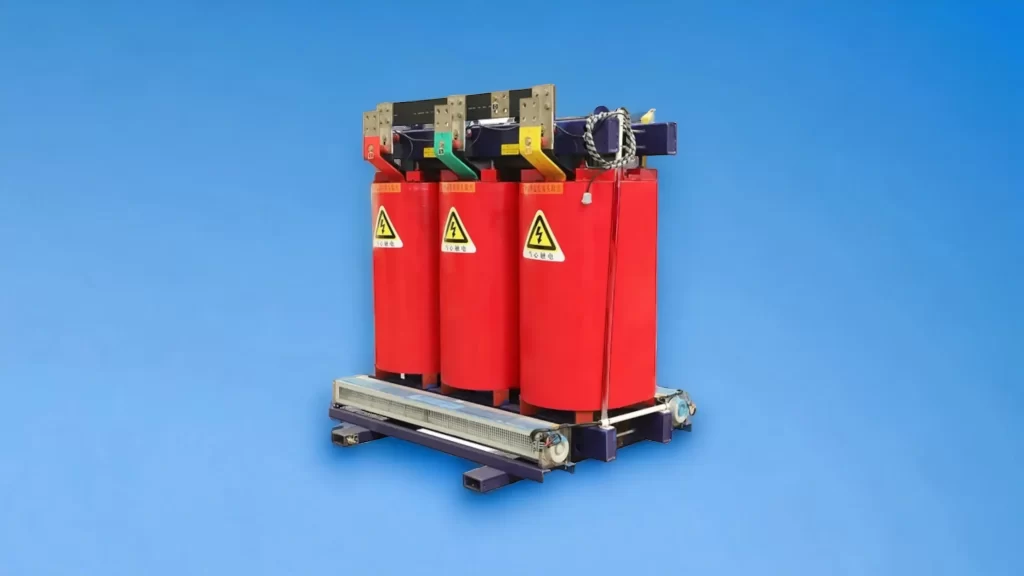When it comes to electrical transformers, safety and sustainability are two crucial factors to consider. That’s why more and more companies are switching to dry type transformers as their smart choice. With their advanced design and innovative technology, dry type transformers offer a range of benefits that traditional oil-filled transformers cannot match.

In terms of safety, dry type transformers eliminate the risk of oil leaks, spills, and fires. This not only protects the surrounding environment but also ensures the safety of personnel working in close proximity to the transformers. Additionally, dry type transformers are self-extinguishing and do not release toxic gases in the event of a fire, further enhancing safety measures.
From a sustainability standpoint, dry type transformers are the way forward. Unlike oil-filled transformers, dry type transformers are more environmentally friendly as they do not require regular oil maintenance, reducing the risk of oil contamination and the need for oil disposal. This significantly reduces the carbon footprint of the transformers and promotes a greener future.
In conclusion, with their enhanced safety features and sustainable design, dry type transformers are the smart choice for any organization looking to prioritize both safety and sustainability in their electrical systems. Make the switch today and embrace a safer and greener future.
Table of Contents
Comparison with traditional oil-filled transformers
When comparing dry type transformers with traditional oil-filled transformers, it becomes evident why the former is the smarter choice. Oil-filled transformers require regular oil maintenance, including oil testing, filtering, and replacement. This adds to the operational costs and the complexity of maintenance procedures. On the other hand, dry type transformers eliminate the need for oil maintenance, simplifying the overall maintenance process.
Moreover, oil-filled transformers are susceptible to oil leaks and spills, posing significant safety hazards. These leaks can result in fires or explosions, endangering personnel and causing damage to property. In contrast, dry type transformers eliminate the risk of oil leaks, making them a safer option for any organization.
Safety benefits of dry type transformers
Dry type transformers are designed with safety as a top priority. Their construction and materials ensure that they are self-extinguishing, meaning they will not contribute to a fire. This is an important feature in high-risk environments such as commercial buildings, hospitals, or data centers. In the event of a fire, dry type transformers do not release toxic gases, protecting the health and safety of occupants.
Additionally, dry type transformers are often equipped with advanced protection features such as temperature sensors and fault detection systems. These mechanisms help detect potential issues before they escalate, preventing transformer failures and minimizing the risk of electrical accidents.
Environmental benefits of dry type transformers
In today’s world, sustainability is a key consideration for organizations across industries. Dry type transformers offer significant environmental benefits compared to oil-filled transformers. As mentioned earlier, dry type transformers do not require oil maintenance, reducing the risk of oil contamination and the need for oil disposal. This not only reduces the carbon footprint of the transformers but also minimizes the environmental impact of oil-related activities.
Furthermore, the absence of oil in dry type transformers eliminates the risk of oil leaks, which can have severe consequences for the environment. Oil leaks can contaminate soil, water bodies, and even affect wildlife. By choosing dry type transformers, organizations can contribute to a cleaner and healthier environment.
Energy efficiency of dry type transformers
Energy efficiency is another crucial aspect to consider when selecting transformers. Dry type transformers are known for their high energy efficiency ratings. They are designed to minimize energy losses during the conversion and transmission of electrical power. This not only reduces electricity consumption but also lowers operational costs for organizations.
In addition, dry type transformers often incorporate advanced cooling mechanisms, such as forced air or natural convection, to dissipate heat efficiently. This helps maintain optimal operating temperatures, ensuring the transformers operate at their highest efficiency levels.
Applications and industries that benefit from dry type transformers
Dry type transformers find application in various industries and environments. They are commonly used in commercial buildings, including offices, hotels, and shopping malls, where safety and reliability are of utmost importance. The healthcare industry also relies on dry type transformers to power critical medical equipment and ensure uninterrupted patient care.
Data centers, with their high power demands and sensitive equipment, benefit greatly from the safety and reliability of dry type transformers. The manufacturing sector, including industries such as automotive, electronics, and food processing, also rely on dry type transformers to power their production lines.
Considerations when choosing a dry type transformer
When choosing a dry type transformer, there are several factors to consider. First and foremost, it is essential to determine the transformer’s power rating to ensure it can handle the electrical load requirements. Additionally, the insulation class and temperature rise ratings must align with the specific application and environmental conditions.
The physical size and weight of the transformer should also be taken into account, especially when space is limited. Noise levels may be another consideration, especially in environments where low noise levels are required, such as hospitals or residential areas.
Lastly, it is important to select a reputable manufacturer or supplier when purchasing a dry type transformer. Quality, reliability, and after-sales support are crucial aspects to consider to ensure the transformer meets the required standards and performs optimally.
Installation and maintenance of dry type transformers
Proper installation and maintenance are essential to maximize the performance and lifespan of dry type transformers. During installation, it is important to follow the manufacturer’s guidelines and ensure proper grounding and electrical connections. Regular inspections and preventive maintenance should be carried out to identify any potential issues and address them promptly.
Maintenance activities may include cleaning the transformer, inspecting and tightening electrical connections, and testing insulation resistance. It is also recommended to schedule periodic testing and inspections by qualified professionals to ensure the transformer’s continued performance and compliance with safety standards.
Conclusion: Making the smart choice for safety and sustainability
In conclusion, dry type transformers offer numerous advantages over traditional oil-filled transformers. Their enhanced safety features, environmental benefits, energy efficiency, and reliability make them the smart choice for organizations prioritizing safety and sustainability.
By eliminating the risk of oil leaks and spills, dry type transformers ensure the safety of personnel and protect the environment from potential hazards. The absence of oil maintenance reduces the carbon footprint of the transformers, promoting a greener future.
With their high energy efficiency ratings and advanced cooling mechanisms, dry type transformers help organizations save on electricity costs and operate more sustainably. They find application in various industries, from commercial buildings to data centers and manufacturing facilities.
When choosing a dry type transformer, it is crucial to consider factors such as power rating, insulation class, and temperature rise. Proper installation and maintenance are also essential to ensure optimal performance and longevity.
Make the smart choice today and switch to dry type transformers to prioritize safety, sustainability, and the future of your electrical systems.
